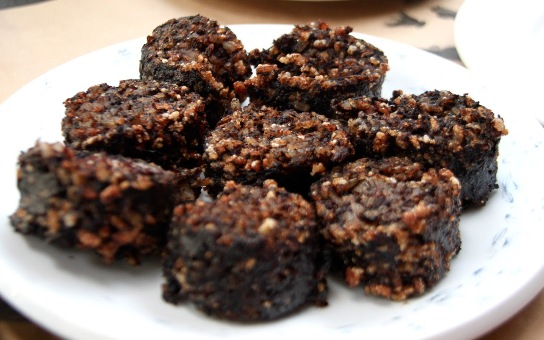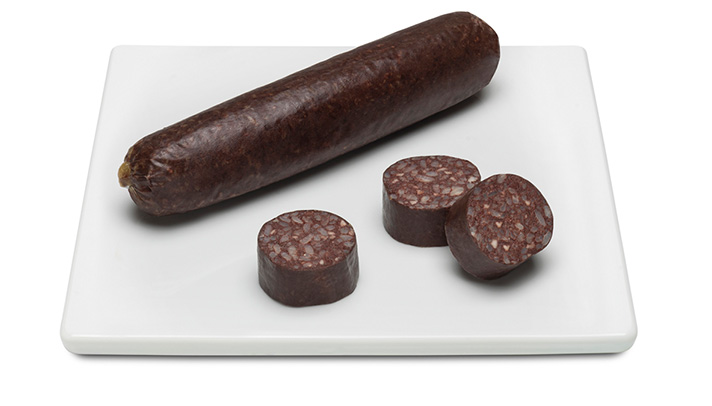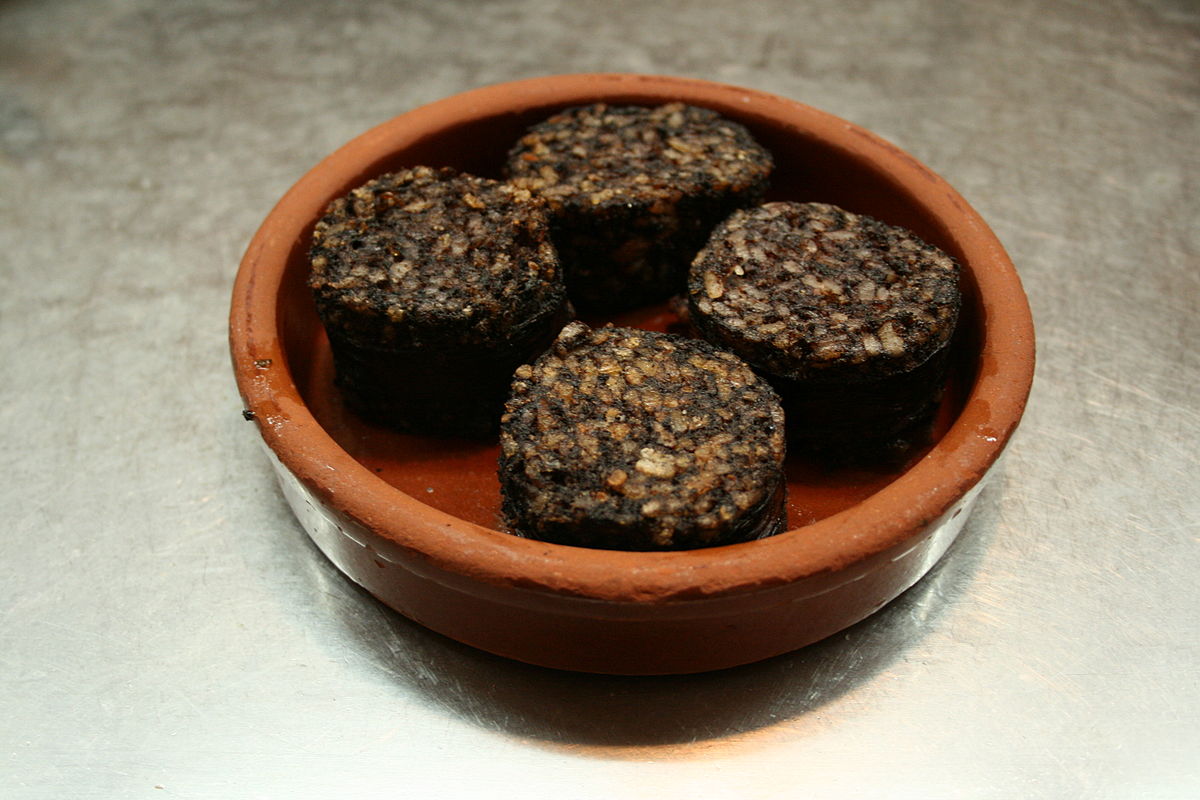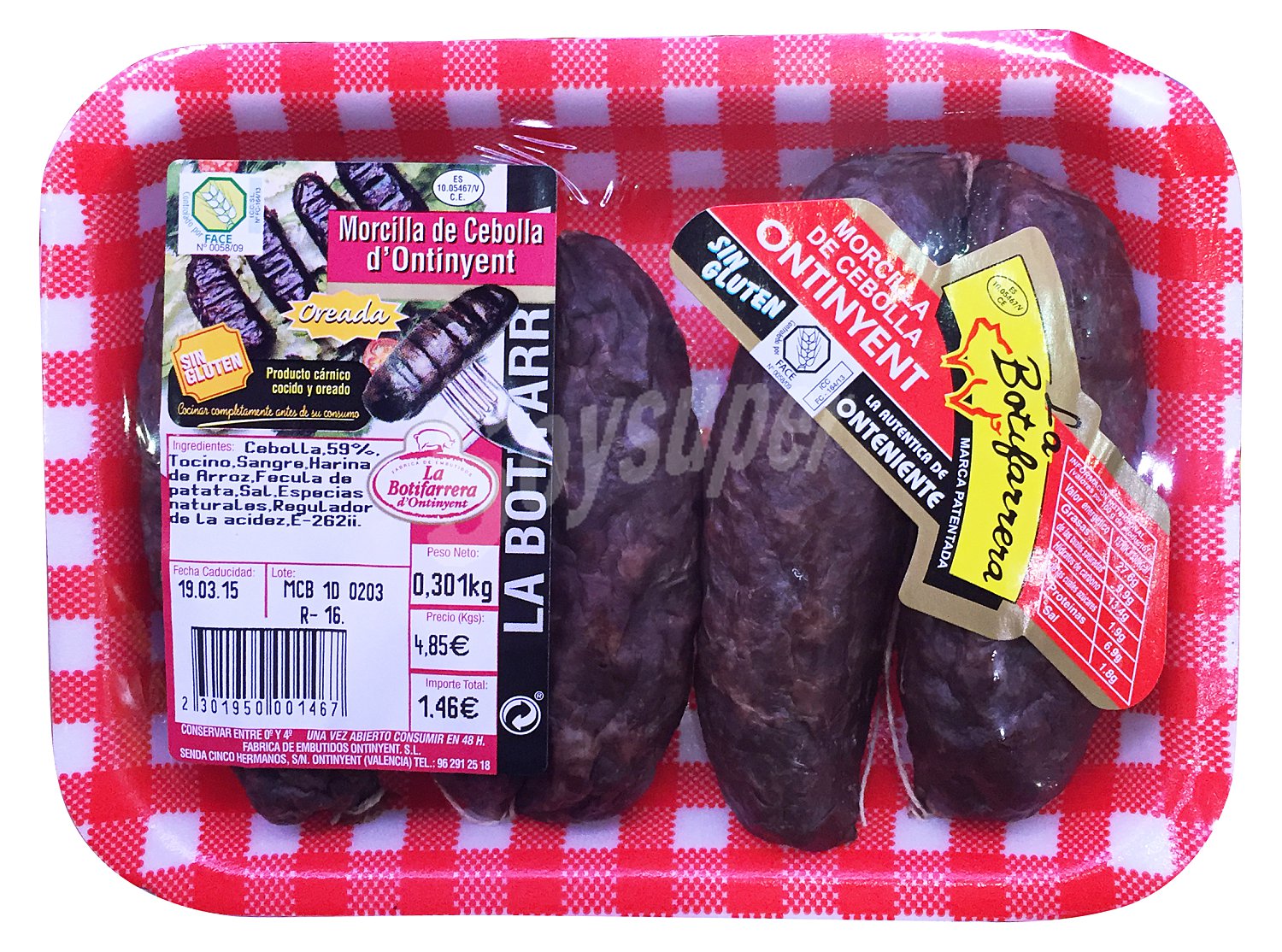 Fried Spanish Morcilla is a dish that consists of frying black pudding with onions and other spices and then serving it on top of some crunchy bread, it's that simple! This is a typical dish found throughout Spain and is extremely easy to make.
Fried Spanish Morcilla is a dish that consists of frying black pudding with onions and other spices and then serving it on top of some crunchy bread, it's that simple! This is a typical dish found throughout Spain and is extremely easy to make.
Black pudding may not be an ingredient for the squeamish as it is made out of the congealed blood of a freshly killed pig, which gives the resulting sausage its dark hue. The sausage also contains a number of spices.
The origins of black pudding are in Ancient Greece where, according to Plato, it was invented by a Greek man named Aftónitas. Black pudding is actually mentioned in Plato's 'Homer's Odyssey'. The first description of the Spanish food can be found in a passage by Rupert de Nola in 1525. The word 'morcilla' actually comes from Spain although it has its origins in a mixture between the Celtic word for stump and the Basque word for a bulky, deformed object.
Black pudding is very popular across the Spanish peninsular and many regions have their own version of it, around 15 different types altogether. The main black pudding producing regions of Spain include the Basque Country, Extremadura, Asturias, Valencia, Murcia, León, Zamora and Castilla-La Mancha. In short, wherever you go when you visit Spain, you will always be able to find a good example of black pudding.


Among some of the best types of Morcilla, you must try the 'Morcilla de Burgos' which is one of the most well known black puddings in Spain. This particular variety is made with pig's lard and blood, rice, pimetón, salt, onion and spices to taste. For example, the 'Morcilla de Aranda' traditionally uses cumin, black pepper and a pinch of cinnamon to give it a unique taste.
Or if you are looking for a healthier option, you could always try the 'Morcilla de Villada'. This type of morcilla has a low-fat content, around 3% fat. However, the texture is still very creamy with a delicious flavour, something which is enhanced by curing the sausage for a number of years.
 Take care to pick the best type of morcilla for your dish. If you are unsure, you could always ask your local delicatessen as to which one will taste best when fried. Be sure that you slice the black pudding thickly as they will be less likely to disintegrate when you fry them. Also, when turning the fried black pudding over, make sure you do it very carefully as the slices can break up easily.
Take care to pick the best type of morcilla for your dish. If you are unsure, you could always ask your local delicatessen as to which one will taste best when fried. Be sure that you slice the black pudding thickly as they will be less likely to disintegrate when you fry them. Also, when turning the fried black pudding over, make sure you do it very carefully as the slices can break up easily.
Finally one of my favourites is the Morcilla Oreada de Cebolla (readily available in supermarkets around Spain) - this morcilla has been aired and partially dried meaning that it is much easier to fry as it has slightly less moisture and won't break up so easily in the frying pan. You can recognise it by its wrinkled surface. This is my favourite for combining with fried eggs or even in a classic sandwich with crunchy bread know as a " Blanco y Negro" - Black & white. This is a baguette sandwich made with 'white sausages' (longanizas blancas) and 'black pudding' (morcilla with onions), it doesn't look that appetising.... but trust me, it's absolutely wonderful!
